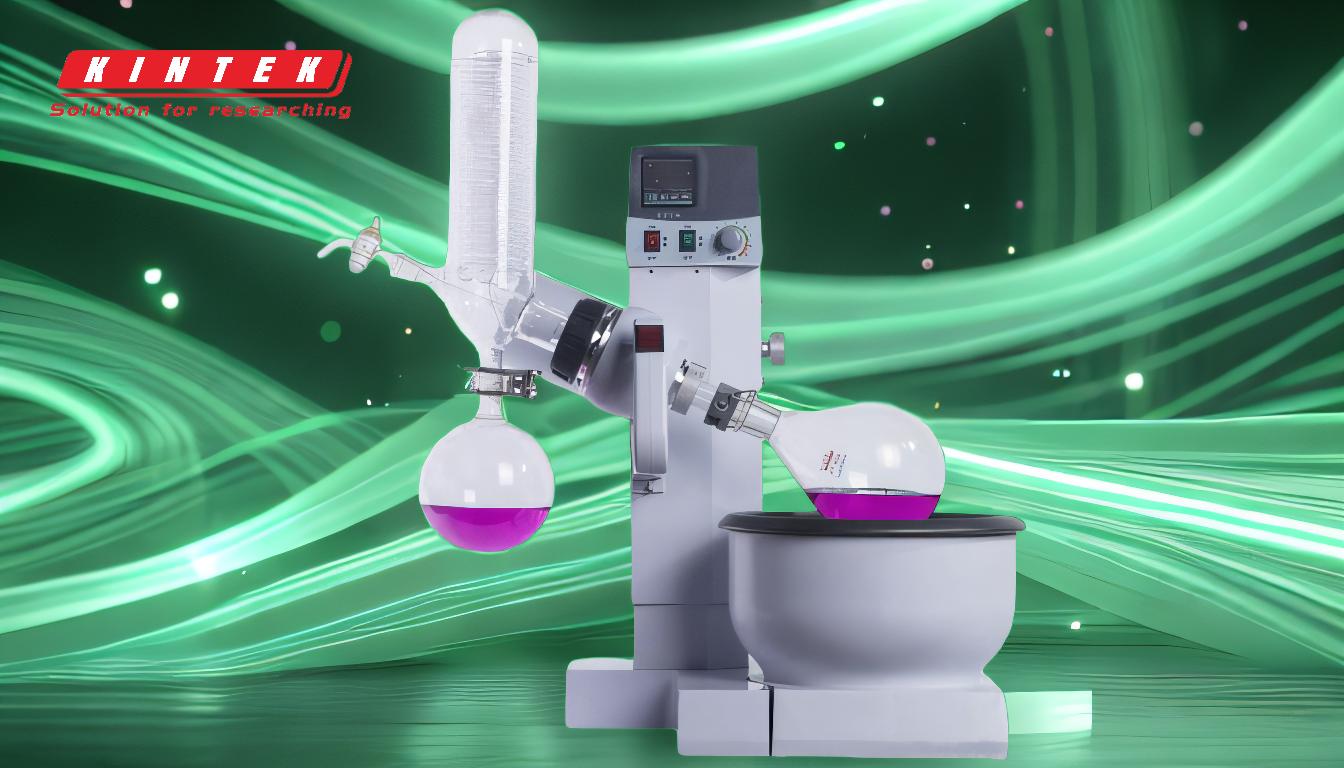Rotary evaporation is a widely used technique in laboratories and industries for solvent removal, concentration, and purification of samples. It operates by rotating a flask containing the sample in a heated water bath under reduced pressure, which lowers the boiling point of the solvent. This allows for gentle evaporation at lower temperatures, minimizing the risk of damaging heat-sensitive materials. The solvent vapor is then condensed and collected, leaving behind a concentrated sample. The process is efficient, safe, and versatile, making it suitable for applications in chemistry, pharmaceuticals, biotechnology, and research and development.
Key Points Explained:

-
Working Principle of Rotary Evaporation:
- Rotation and Thin Film Formation: The sample flask is rotated, creating a thin film of the liquid on the inner surface of the flask. This increases the surface area for evaporation, enhancing the efficiency of the process.
- Reduced Pressure: A vacuum is applied to lower the boiling point of the solvent, allowing evaporation to occur at lower temperatures. This is particularly beneficial for heat-sensitive samples.
- Heating: The flask is immersed in a heated water bath, providing the necessary thermal energy for evaporation.
- Condensation: The solvent vapor is cooled by a condenser, converting it back into a liquid, which is then collected in a separate flask.
-
Advantages of Rotary Evaporation:
- Efficiency: The formation of a thin liquid film on the flask's inner surface significantly increases the surface area for evaporation, leading to faster concentration of samples.
- Gentle Evaporation: The reduced pressure allows for evaporation at lower temperatures, which is crucial for preserving the integrity of heat-sensitive materials.
- Prevention of Bumping: The rotation and thin film formation help prevent bumping (sudden bursts of boiling), reducing the risk of sample loss or contamination.
- Compact and User-Friendly Design: Rotary evaporators are designed to be compact, easy to use, and easy to observe, making them suitable for both laboratory and industrial settings.
- Versatility: They are suitable for a wide range of applications, including reflux operations, rapid solvent evaporation, concentration of trace components, and reaction processes requiring stirring.
- High-Efficiency Condensation: The use of high-efficiency glass condensers ensures effective cooling and recycling of solvent vapors, improving overall evaporation efficiency.
- Safety Features: Many rotary evaporators come with built-in safety features, such as an automatic lifting motor that raises the flask above the heating pot when the power is turned off, preventing overheating and potential accidents.
-
Applications of Rotary Evaporation:
- Chemical and Pharmaceutical Industries: Used for the concentration, crystallization, drying, and separation of chemical compounds and pharmaceutical products.
- Biotechnology: Ideal for the concentration and purification of biological products that are sensitive to high temperatures.
- Research and Development: Essential in R&D labs for solvent recovery, sample preparation, and process optimization.
-
Design and Operational Features:
- Leakproofness: Modern rotary evaporators are designed to be leakproof, comparable to high-end foreign equipment, ensuring reliable and safe operation.
- Humanization Design: Improvements in design focus on user convenience, including ergonomic controls and easy-to-clean components.
- Continuous Feeding System: Some models feature a continuous feeding system, which enhances working efficiency by allowing for uninterrupted operation.
In summary, rotary evaporation is a highly efficient, safe, and versatile technique for solvent removal and sample concentration. Its working principle, combined with its numerous advantages, makes it an indispensable tool in various scientific and industrial applications.
Summary Table:
| Aspect | Details |
|---|---|
| Working Principle | Rotation, thin film formation, reduced pressure, heating, and condensation. |
| Advantages | Efficiency, gentle evaporation, bumping prevention, compact design, safety. |
| Applications | Chemistry, pharmaceuticals, biotechnology, R&D. |
| Design Features | Leakproof, user-friendly, continuous feeding system. |
Discover how rotary evaporation can optimize your lab processes—contact us today!









